
San Juan del Cesar is a municipality and town located in the La Guajira Department, Colombia.

Aguadas is a town and municipality in the Colombian department of Caldas. It is bordered to the north by Abejorral, to the east by Sonsón, to the southeast by Salamina, to the south by Pacora, to the west by Caramanta and Valparaiso, and to the northwest by La Pintada. The municipality of Aguadas, located in the northern part of the department, was founded in 1808 by José Narciso Estrada. In addition to the fame of Aguadeño hats, which are very similar to palm-straw Panama hats. Aguadas offers visitors its historic center, which was declared a national monument in 1982. It has a temperate climate thanks to the variety of climates ranging from warm to moor.

Salamina is a town and municipality in the Colombian department of Caldas. It is located north of the department and has a township called San Felix. It was declared a national monument and historic heritage of mankind.

Florencia is a municipality and the capital city of the Department of Caquetá, Colombia. It is the most populous city in the Amazon Region of Colombia. It lies on the Orteguaza River which flows into the Caqueta River. Its population is 177,946 in 2023.

In Spain, the legal designation Conjunto histórico is part of the national system of heritage listing. It is applied to buildings in a given locality. It is typically used to protect complete villages, such as Peñaranda de Duero, or historic quarters of towns such as Avilés.

The current legislation regarding historical monuments in Spain dates from 1985. However, Monumentos nacionales were first designated in the nineteenth century. It was a fairly broad category for national heritage sites protecting, for example, the Alhambra. The overarching category for Spanish heritage sites is now Bien de Interés Cultural.
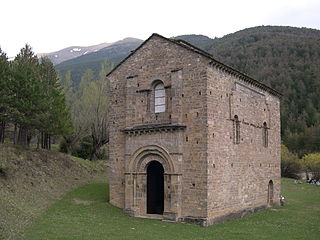
A Bien de Interés Cultural is a category of the heritage register in Spain. The term is also used in Colombia and other Spanish-speaking countries.

Luis Antonio Robles Suárez also known as "El Negro Robles", was a Colombian lawyer and politician. He was the first Afro-Colombian to hold a cabinet-level ministry in Colombia serving as Secretary of the Treasury and Public Credit during the administration of President Aquileo Parra Gómez, as well as being the first Afro-Colombian Congressperson as Member of the Chamber of Representatives for Magdalena, and the first Afro-Colombian Governor of a Department, as the 16th President of the Sovereign State of Magdalena. He graduated a lawyer from Our Lady of the Rosary University in 1872, thus also becoming the first Afro-Colombian to ever serve as a lawyer in Colombia.

A jardín histórico is a Spanish historic garden. In Spain Jardín histórico is a heritage listing which protects historic gardens.. The Spanish listing was established in 1983, replacing a former heritage category Jardín artístico. It is currently regulated by the Ministry of Education, Culture and Sport.
Patrimonio histórico español is a term for Spain's heritage, including National Heritage Sites. The Ministry of Culture has a department, the Subdirección General de Protección del Patrimonio Histórico which maintains a heritage register.
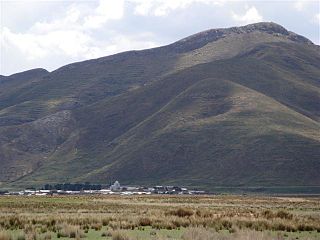
Pukarani is a mountain with an archaeological site of the same name in the Andes of Peru, about 4,301.9 m (14,114 ft) high. It is located in the Puno Region, Lampa Province, Nicasio District.
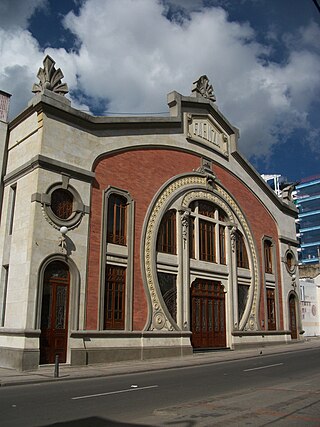
The Faenza theatre is the oldest movie theatre in Bogotá, Colombia. It was opened on the site of a former ceramic factory on 3 April 1924 with the screening of a French film. The theatre was listed as a National Monument of Colombia on 11 August 1975 under decree 1584.
Bartolomé Ruiz González is a Spanish archaeologist who has been involved in cultural management in Andalucia since the late 1970s. He currently runs the Archaeological Ensemble of the Antequera Dolmens and is the director of the Royal Academy of Fine Arts of Antequera.
The Antequera Dolmens Site is a cultural heritage ensemble comprising three cultural monuments and 2 natural mountain features in and near the city of Antequera in Andalusia, Spain. The cultural institution responsible for its protection is the CADA. It was declared a World Heritage Site in 2016.
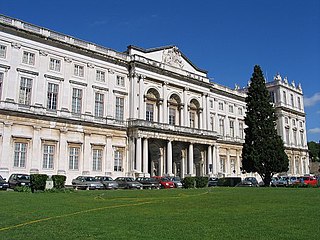
The Direção-Geral do Património Cultural (DGPC), formerly the Instituto de Gestão do Património Arquitectónico e Arqueológico (IGESPAR) and Instituto Português do Património Arquitetónico (IPPAR, is a general directorate of the Government of Portugal tasked with the conservation, preservation, and inventory of Portuguese architectural heritage. This includes buildings and sites of historical, architectural, scientific or artistic value. The institute keeps a registry of all the classified sites and issues legally binding opinions regarding any works on them.

LaRed Turística de Pueblos Patrimonio is an initiative led by Colombia's Ministry of Commerce, Industry, and Tourism, with the assistance of the Ministry of Culture. It is administered by the National Tourism Foundation (FONTUR).
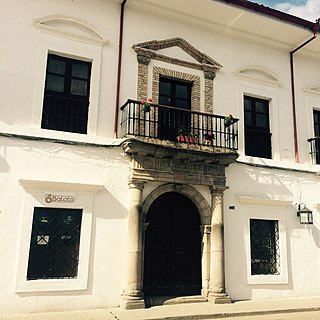
The Popayán Archdiocesan Museum of Religious Art is a museum located in the capital of the department of Cauca, Colombia. The museum is mainly dedicated to exhibit sacred art.
The cultural heritage of Peru, officially the Cultural heritage of the Nation, is the name given to the set of goods, both tangible and intangible, accumulated over time. These goods can be paleontological, archaeological, architectural, historical, artistic, military, social, anthropological or intellectual. In Peru, the competence for the protection of cultural heritage is in the hands of the Ministry of Culture.















